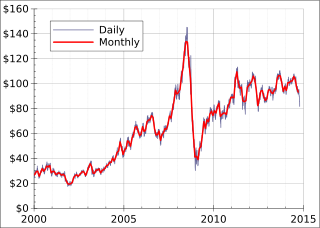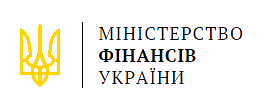
Within the budgetary process, deficit spending is the amount by which spending exceeds revenue over a particular period of time, also called simply deficit, or budget deficit: the opposite of budget surplus. The term may be applied to the budget of a government, private company, or individual. Government deficit spending was first identified as a necessary economic tool by John Maynard Keynes in the wake of the Great Depression. It is a central point of controversy in economics, as discussed below.

Public finance is the study of the role of the government in the economy. It is the branch of economics that assesses the government revenue and government expenditure of the public authorities and the adjustment of one or the other to achieve desirable effects and avoid undesirable ones. The purview of public finance is considered to be threefold, consisting of governmental effects on:
- The efficient allocation of available resources;
- The distribution of income among citizens; and
- The stability of the economy.

The government budget balance, also referred to as the general government balance, public budget balance, or public fiscal balance, is the difference between government revenues and spending. For a government that uses accrual accounting the budget balance is calculated using only spending on current operations, with expenditure on new capital assets excluded. A positive balance is called a government budget surplus, and a negative balance is a government budget deficit. A government budget presents the government's proposed revenues and spending for a financial year.

A ministry of finance is a ministry or other government agency in charge of government finance, fiscal policy, and financial regulation. It is headed by a finance minister, an executive or cabinet position.

The treasurerof Australia, also known as the Federaltreasurer or simply the treasurer, is the minister of state of the Commonwealth of Australia charged with overseeing government revenue collection, federal expenditure and economic policy as the head of the Department of the Treasury. The current treasurer is Jim Chalmers, who was selected by Prime Minister Anthony Albanese in May 2022 following the 2022 Australian federal election.
The Ministry of Finance is a Cabinet-level ministry of the Government of Pakistan in charge of government finance, physical policy and financial regulation. It is headed by a Finance Minister, an executive or cabinet position. The Minister is responsible each year for presenting the federal government's budget to the Parliament of Pakistan.

Government spending or expenditure includes all government consumption, investment, and transfer payments. In national income accounting, the acquisition by governments of goods and services for current use, to directly satisfy the individual or collective needs of the community, is classed as government final consumption expenditure. Government acquisition of goods and services intended to create future benefits, such as infrastructure investment or research spending, is classed as government investment. These two types of government spending, on final consumption and on gross capital formation, together constitute one of the major components of gross domestic product.

The United States budget comprises the spending and revenues of the U.S. federal government. The budget is the financial representation of the priorities of the government, reflecting historical debates and competing economic philosophies. The government primarily spends on healthcare, retirement, and defense programs. The non-partisan Congressional Budget Office provides extensive analysis of the budget and its economic effects. CBO estimated in February 2024 that Federal debt held by the public is projected to rise from 99 percent of GDP in 2024 to 116 percent in 2034 and would continue to grow if current laws generally remained unchanged. Over that period, the growth of interest costs and mandatory spending outpaces the growth of revenues and the economy, driving up debt. Those factors persist beyond 2034, pushing federal debt higher still, to 172 percent of GDP in 2054.
A government budget is a projection of the government's revenues and expenditure for a particular period of time often referred to as a financial or fiscal year, which may or may not correspond with the calendar year. Government revenues mostly include taxes while expenditures consist of government spending. A government budget is prepared by the government or other political entity. In most parliamentary systems, the budget is presented to the legislature and often requires approval of the legislature. Through this budget, the government implements economic policy and realizes its program priorities. Once the budget is approved, the use of funds from individual chapters is in the hands of government ministries and other institutions. Revenues of the state budget consist mainly of taxes, customs duties, fees and other revenues. State budget expenditures cover the activities of the state, which are either given by law or the constitution. The budget in itself does not appropriate funds for government programs, hence need for additional legislative measures. The word budget comes from the Old French bougette.

The Department of the Treasury, also known as The Treasury, is the national treasury and financial department of the federal government of the Commonwealth of Australia. The treasury is responsible for executing economic and fiscal policy, market regulation and the delivery of the federal budget with the department overseeing 16 agencies. The Treasury is one of only two departments that have existed continuously since Federation in 1901, the other being the Department of the Attorney-General.

The Stabilization fund of the Russian Federation was a sovereign wealth fund established based on a resolution of the Government of Russia on 1 January 2004, as a part of the federal budget to balance the federal budget at the time of when oil price falls below a cut-off price, currently set at US$27 per barrel.

Canadian public debt, or general government debt, is the liabilities of the government sector. Government gross debt consists of liabilities that are a financial claim that requires payment of interest and/or principal in future. They consist mainly of Treasury bonds, but also include public service employee pension liabilities. Changes in debt arise primarily from new borrowing, due to government expenditures exceeding revenues.

The Australian government debt is the amount owed by the Australian federal government. The Australian Office of Financial Management, which is part of the Treasury Portfolio, is the agency which manages the government debt and does all the borrowing on behalf of the Australian government. Australian government borrowings are subject to limits and regulation by the Loan Council, unless the borrowing is for defence purposes or is a 'temporary' borrowing. Government debt and borrowings have national macroeconomic implications, and are also used as one of the tools available to the national government in the macroeconomic management of the national economy, enabling the government to create or dampen liquidity in financial markets, with flow on effects on the wider economy.

The Ministry of Finance of Ukraine is the ministry of the Ukrainian government charged with developing and implementing national financial and budget policies, and with defining national policies in customs and taxation. The ministry is responsible for ensuring that the state has enough resources to perform its functions and that financial policies promote economic growth.

The Budget of His Majesty's Government is an annual budget set by HM Treasury for the following financial year, with the revenues to be gathered by HM Revenue and Customs and the expenditures of the public sector, in compliance with government policy. The budget statement is one of two statements made by the Chancellor of the Exchequer in the House of Commons, with the Spring Statement being made the following year.

The Swiss federal budget refers to the annual revenue and expenditures of the Swiss Confederation. As budget expenditures are issued on a yearly basis by the government, the federal council, and have to be approved by the parliament, they reflect the country's Fiscal policy.

The federal budget of Russia is the leading element of the budget system of Russia. The federal budget is a major state financial plan for the fiscal year, which has the force of law after its approval by the Russian parliament and signed into law by the President of Russia. That the federal budget is the primary means of redistribution of national income and gross domestic product through it mobilized the financial resources necessary to regulate the country's economic development, social policy and the strengthening of the national defense. The share of federal budget accounts for a significant portion of the distribution process, which is the allocation of funds between sectors of the economy, manufacturing and industrial areas, regions of the country.
The Federal Budget 2013–14 was the federal budget of Pakistan for the fiscal year beginning from 1 July 2013 and ending on 30 June 2014. The budget was presented by Finance Minister Ishaq Dar on 12 June 2013 during a session of the National Assembly. This is the first federal budget presented during the tenure of newly elected Prime Minister Nawaz Sharif and his cabinet since the change of government following the nationwide general elections held in 2013.

The Ministry of Finance, abbreviated MOF, is a ministry of the Government of Somalia that is charged with the responsibility for government expenditure and revenue raising. The ministry's role is to develop economic policy and prepare the federal budget. The Ministry of Finance also oversees financial legislation and regulation. Each year in October, the Minister of Finance presents the Somali federal budget to the Parliament.

The 2023–24 Pakistan federal budget was the Federal Budget implemented by the government of Pakistan for the fiscal year 2023–24. The revised budget was presented to Parliament on 25 June, 2023 after Finance Minister Ishaq Dar introduced new taxes and expenditure cuts. The budget was accepted the next day. The Federal Budget entailed the raising of the Petroleum Development Levy (PDL) and lifting of all restrictions on imports. These revisions came after talks between the Prime Minister Shehbaz Sharif and IMF Director Kristalina Georgieva. The total budget outlay (expenditure) of the new budget was Rs14.46 trillion, 51% higher than the previous year. Federal Revenue for the budget was budgeted as Rs12.163 trillion, with Rs5.276 trillion being transferred to the provinces, leading to a net revenue of Rs6.887 trillion, 36.9% higher than the previous year. The FBR's budgetary target was set at Rs9.200 trillion, 23% than last year's target. The fiscal deficit being estimated at Rs6.923 trillion or 6.54% of the GDP. The budget claimed it added no new taxes, no increases in duties on import of essential items, exemptions of custom duties on certain agricultural goods, and an increase in government wages and minimum wage proposals. The budget included funding for a number of development initiatives to increase the nation's economic growth rate. The original outlays for the PDSP being estimated at Rs. 2.66 trillion for the development programme, which included a Rs. 950 billion federal Public Sector Development Programme (PSDP), that was approved by the Annual Plan Coordination Committee (APCC). The PDSP would later be further increased to Rs. 2,709 trillion, with Rs. 1,150 trillion being allocated to the Federal Portion, an increase of 58.2% from the previous budget of the development program. The government claimed to alleviate fiscal restrictions and boost sector growth, setting a GDP growth rate of 3.5 percent. This is despite claims of the government engaging in "poll politics", seen in the large Federal Development Budget. Ishaq Dar stated that “This budget should not be seen as an ‘election budget’ – it should be seen as a ‘responsible budget’" By the end of the financial year, Pakistan's real GDP growth rate was reduced to 0.3 percent.












